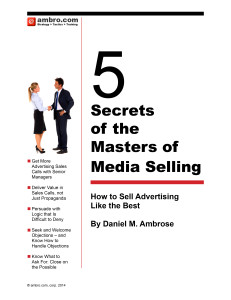Recent news of Facebook’s success with mobile advertising, and Instagram’s launch of advertising units, are just the most recent reminders of how massively the supply of advertising media inventory has grown in the last 20 years. Each “free” service that is launched on the internet, aggregating millions of users, seems to eventually be supported by advertising. Yahoo was the first big one. Google and then its acquisition YouTube are perhaps the most famous. Advertising networks proliferated to allow advertisers to place a banner on thousands of blogs and social media sites like Reditt and Digg grew like weeds.
Billions and billions of advertising media impressions ‘inventory’ of have been created and will be created.
Meanwhile, premium-content publishers have been troubled by the constant pressure, no requirement, to drop their rates to keep getting business. How is a publisher to develop a workable strategy in this world of declining price? My friend Ari Rosenberg wrote today in the Online Publishing Insider blog from MediaPost that pubishers should take control of the sales conversation by focusing on selling engagement rather than reach. I agree with Ari, but I think I would go farther.
In our capitalist world, prices of inventory are simply the result of the mysterious workings of supply and demand. The massive growth of the supply of inventory isn’t within the control of publishers. But publishers can and should develop a genuine plan to drive up demand for their inventory. How do you drive demand?
First, publishers cannot let the rest of the market dictate the terms of the RFP. This starts with the air-cover of marketing in support of advertising sales, being done by both industry organizations and by media properties. The sales pitch needs to reflect that, too. What most publishers fail to do in is deliver a sales persuasion that is really good at establishing agreement to assumptions at the beginning of the sales process that favor their property. The assumptions, about how potential buyers of the advertisers’ products make purchase decisions, can then lead to a logical persuasion that creates or builds demand for premium inventory. Without agreement on the assumptions there can be no persuasion.

Masters of Media Selling: January 2014
That is one of the principles behind my Strategic Sales Tactics training and the Masters of Media Selling public seminars I co-produce and teach for MediaPost.
Social media companies are actively speaking out in the market about how social media influences purchase behavior. Their sales pitch starts with very easy agreement that digital-word-of-mouth is the holy grail of marketing. What they don’t say is that the most influential social-media-influencer in each little friends group is an avid premium content consumer. Avid readership of original reporting is why influencers know more, it’s where they get their ideas. Premium publishers need to develop premium advertising sales persuasion. Only when they do will they build the demand to offset the continued growth of supply that threatens their economics.

